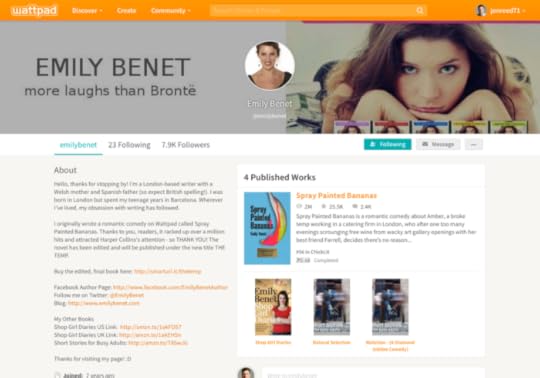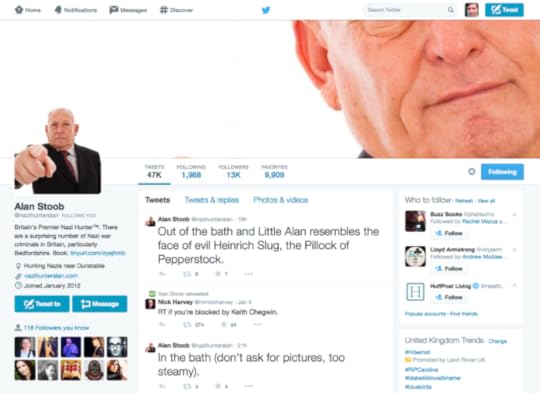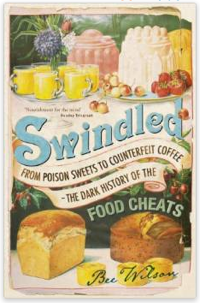Jon Reed's Blog, page 12
January 28, 2015
How Emily Benet used Wattpad as a launchpad, gained a million hits and a book deal with HarperCollins
Serialized novels were popularised by Victorian novelists such as Charles Dickens. Today, free online tools enable anyone to do it – and reach an audience. But would you do it for free? What if it lead to a million hits and a two-book deal with HarperCollins? Emily Benet tells us how she used Wattpad as a launchpad, and shares her top tips for success.
Would you write a novel for free?
That was the request that landed in my in-box back in 2012. The email came from a content manager at Wattpad. If you haven’t heard of it, it’s an online platform which lets you upload stories and read thousands of others for free. I had posted a couple of short stories there and they had seen from my profile that I had been published before. They were looking for decent novels for their Featured section.
Their promo pack informed me of their ten million monthly readers and the proof was in the hundreds of thousands of hits their Featured novels had. Imagine having that many people read your work? The request suddenly seemed a tiny bit appealing.
It occurred to me that £0.00 matched my advance for my first book Shop Girl Diaries. I also reasoned that I had been writing novels for free since I was 11; that I was currently stuck in the middle of a novel no one had expressed interest in; and committing to producing a chapter a week might actually be good for me.
To be clear, it wasn’t that I was giving my copyright away. I would have to keep my work on their site for 6 months after I’d written it. After that I could do what I wanted with it.
My philosophy is Say Yes, Worry Later. Once I’d committed to writing a book for Wattpad, the idea for a romantic comedy called Spray Painted Bananas came quickly. I wrote like mad for four months, posting two chapters a week. Many sites claim they have a huge readership, but getting half a million hits on my novel showed they weren’t exaggerating. The thousands of comments encouraged me to keep on going and the feedback even influenced my plot and made me see things through the eyes of the readers. The huge number of hits led to me signing with an agent very quickly.
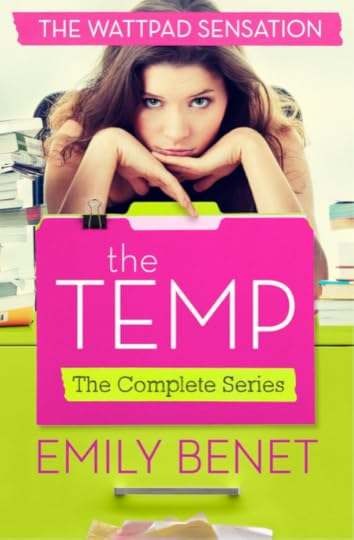 Fast forward to January 2015 and I’m laying out my shiny new novel for my book launch. It’s called The Temp and it’s published by the Harper Collins’ imprint Harper Impulse. It’s the new, edited version of that romantic comedy I wrote on Wattpad. It’s about a broke temp called Amber. One of her life hacks is to go to whacky art gallery openings for free wine with best friend Farrell. One evening she stares at a stuffed, green chicken on display and thinks: I could do this. Enter drop-dead gorgeous gallery promoter and a bunch of unlikely friends to help and hinder her crazy idea to unleash spray painted bananas across the capital.
Fast forward to January 2015 and I’m laying out my shiny new novel for my book launch. It’s called The Temp and it’s published by the Harper Collins’ imprint Harper Impulse. It’s the new, edited version of that romantic comedy I wrote on Wattpad. It’s about a broke temp called Amber. One of her life hacks is to go to whacky art gallery openings for free wine with best friend Farrell. One evening she stares at a stuffed, green chicken on display and thinks: I could do this. Enter drop-dead gorgeous gallery promoter and a bunch of unlikely friends to help and hinder her crazy idea to unleash spray painted bananas across the capital.
There are a growing number of authors who have had success on Wattpad, and both agents and publishers are keeping their eye out for talent. Writing a novel is high risk if your aim is to make money. I still don’t know what it’s like to get an advance. However, if you’re passionate about writing and determined to get published, then you should open yourself up to new opportunities. Don’t waste time complaining how hard it is to get published, but spend time looking for ways to make it happen.
Oh, and write, a lot. That’s always going to be the most important part. You can’t share, sell, promote a novel if you haven’t written it yet.
Emily Benet’s Top Tips for Using Wattpad
Research. Check out the novels on Wattpad to see whether it’s the right platform for your writing. Wattpad has quite a young audience and the most popular genres include YA and fan fiction. That said, it is growing and changing and it’s worth exploring the different categories.
Front Cover. If you’re set on writing a novel for Wattpad, then you’re going to need an enticing front cover. The more professional it looks, the more likely people will click on your story. Connect with designers on Twitter to see what they can offer if you can’t do it yourself.
Frequency. I wrote a buffer of 10,000 words before I started posting on Wattpad. I didn’t want to be caught out and not be able to post one week. It’s very annoying to be reading a book and to have to stop and wait ages to find out what happens next. Choose a frequency to suit your life. You could write short pieces once a day, huge chunks once a month – it’s up to you!
Request to be Featured. If you have any experience of being published, why not contact Wattpad to see if they might feature your novel? Showcase your work by posting a chapter or short story first. If you don’t ask, you don’t get.
Sharing. Life is too short to be shy or precious. Share the fact you’re writing a free novel on Wattpad across your social networks. Open yourself up to feedback and encouragement.
Keep going. Even when you don’t get thousands of hits or comments, keep going. Just think every word written brings you closer to a whole novel written. Agents and publishers need whole novels, not just good beginnings.
Whatever your process, enjoy it. If you’re not enjoying it, why do it at all?
Emily Benet’s book The Temp is available now.

January 14, 2015
How to break into radio writing: 7 tips by BBC Radio 4 commissioner Caroline Raphael
This post first appeared on the On the Write Track blog.
Whether you’re interested in writing drama or comedy, plays or sketches, BBC Radio 4 commissions hundreds of hours of original material every year – far more than BBC TV – and is always on the look out for new writing talent.
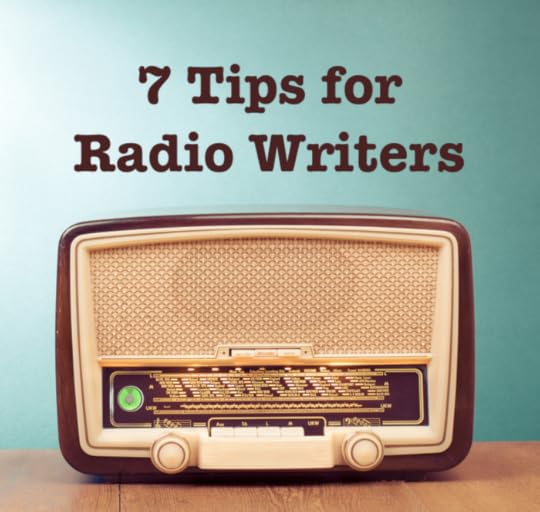
BBC Radio 4 commissioner Caroline Raphael has commissioned most types of radio content but now it’s her job to fill the Radio 4’s entire comedy output – 200 hours every year. So, we asked her to give us the inside track on how the commissioning process works at BBC Radio 4 and where a budding scriptwriter should start if they want to write for radio.
1. Get the guidelines
Before you put pen to paper, it’s important to become very familiar with the BBC Radio commissioning guidelines. Whether it’s entertainment or factual, each area has its own commissioning round and has its own set of specific guidelines that are published at different times of the year. BBC Radio 4 Comedy, has two formal commissioning rounds each year, one in the autumn and another in the spring. The guidelines are freely available to download.
Caroline says: “The guidelines contain everything a writer needs to know about how to submit work to us. They give heaps of practical information like what types of shows and plays we want and what themes we’re interested in – as well as the themes we’re not so interested in.”
Writers interested in the autumn comedy round should start looking for the guidelines online from mid-September. The spring guidelines normally appear around the end of February.
2. Find the producer that’s right for you
Everything that comes to Caroline for potential commissioning has to come with a producer ‘attached to it’ – that could be a BBC producer or an independent production company. So if you have a script that you think might be good for radio, how do you find a producer?
“Don’t just send your work off to anyone, listen to a lot of Radio 4 output first.”
“The secret to finding the right producer is that there is no secret – you just have to do your market research and target the right person” says Caroline. “Don’t just send your work off to anyone, listen to a lot of Radio 4 output first and each time you hear something you really like or is similar to your authorial voice note down the name of the show and who the producer or production company is. Know the specific slot that you see your piece being suitable for too – be it a sitcom, sketch or drama. Then, write to the producer. Tell them why you like their work, what you’ve listened to and why you think they’ll like what you have to offer – sell your idea to them and if they’re interested, they’ll ask to see the script.”
Caroline also suggests that writer-performers should invite the producer to see their show or watch their film online.
3. Understand how people listen to radio
Perhaps rather obviously, writing for radio isn’t like writing novels or writing for stage or screen. However, not only should the writer master how to convey their story only with dialogue, they must also understand how people listen to the radio in the specific slot they are writing for. Caroline says:
 “Writers need to stop and think about when and how people actually listen to the radio. People usually have the radio on in the background for company and rarely tune in for specific shows. They listen in a linear way and just keep listening to whatever comes on next. However, people also listen in different ways depending on the time of day. For example, comedy slots in the early evening need to pick people up after a day at work. Whatever you write has to fit in to what people are ready to listen to at that time – the golden rule is to know the slot you are writing for back to front.”
“Writers need to stop and think about when and how people actually listen to the radio. People usually have the radio on in the background for company and rarely tune in for specific shows. They listen in a linear way and just keep listening to whatever comes on next. However, people also listen in different ways depending on the time of day. For example, comedy slots in the early evening need to pick people up after a day at work. Whatever you write has to fit in to what people are ready to listen to at that time – the golden rule is to know the slot you are writing for back to front.”
4. Don’t stereotype the Radio 4 listener
Picture the typical BBC Radio 4 listener. You might think of a retired couple living in the home counties with a couple of Labradors but according to Caroline, it’s wrong to stereotype and your script won’t make it very far if you don’t push boundaries. She says:
“We want to be pushed so writers, push us!”
“Radio 4 listeners are very diverse. They don’t all live in Tunbridge Wells and get annoyed when a member of the Archers changes. Yes they’re older but I’m older and I used to listen to punk music and go on demos. Our listeners have diverse tastes and we’re looking for writers who have something to say about the world and who use language brilliantly – we want to be pushed so writers, push us!”
5. You have to enjoy writing ‘without the pictures’
According to Caroline, many experienced writers have tried and failed to write for radio because it is no easy task. That’s why she believes that even if a writer has written TV scripts and books they have to give radio script writing a go before they send in an idea.
“Writing for radio’s not for everybody,” says Caroline. “If you’re thinking of writing for us you have to try writing without any pictures. Just try writing only dialogue – some writers don’t like it because they think visually. It sounds obvious but you can’t show things with radio – absolutely everything has to come across in the words. Character has to come across purely through dialogue and that’s far harder than you think.”
6. Find out about the slots that accept first time writers
If you’re a novice writer, it’s worth knowing that Radio 4 does accept the work of first time writers – but only for some ‘open door’ slots. Caroline’s advice is to get to know what these are by reading through the guidelines. The two ‘open door’ shows in Caroline’s area of radio comedy are Newsjack on Radio 4 Extra and the Show What You Wrote. Caroline says that writing short pieces for either show is a great way of getting noticed by producers. She said:
“Increasingly, when I look at commissioning a first sitcom or play a writer will have already had work commissioned on one of our open door shows because that’s how you find the right producers. Also, after writing for one of those shows, writers are sometimes asked to be an additional writer for shows like The News Quiz – and if you get that you could land yourself a years contract working for the Radio 4 comedy department as one of their contract writers.”
Writers interested in approaching The Show What You Wrote or Newsjack should keep an eye on their Twitter feeds and submit sample scripts through the website.
7. Hawk your work around – there’s no excuse
Caroline spends a lot of time watching YouTube, reading blogs and downloading podcasts to spot new talent. She spends many evenings watching performances and going along film screenings. Indeed, she thinks there are now so many ways for writers to get their work seen, there’s no real excuse.
“If you want to write get out there and make something – generate an audience for your work.”
“It takes years of writing and crafting your profession to make it onto radio – or TV,” says Caroline. “You have to hawk your work around and get some exposure – there are so many channels now to do this. Indeed if you haven’t developed your writing CV in this way then I‘d really ask why. If you want to write get out there and make something – generate an audience for your work.”
Read more at On the Write Track.

January 9, 2015
How Saul Wordsworth took Alan Stoob from Twitter character to published book
Ever dreamed of creating a Twitter character and turning it into a book? Saul Wordsworth reveals how he took his comic creation Alan Stoob from Twitter to bestselling book – and maybe even Hollywood – and how you can get started yourself.
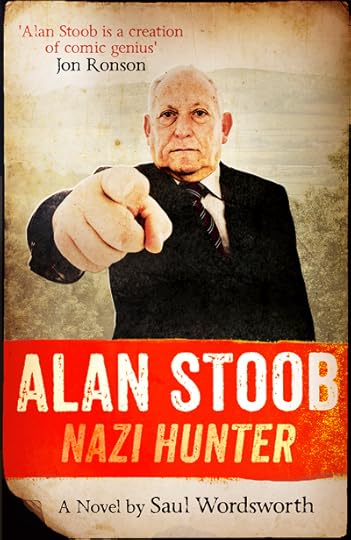 In 2003 I quit my job in sales to become a writer. I wasn’t the first and I won’t be the last. It was a painful process and involved unpleasant periods of temping but by 2005 I had finally extricated myself from my former career and was writing professionally. I’d picked up some freelance work with a magazine publishing company and in my spare time I worked on my magnum opus. When eventually I submitted my manuscript to some of London’s top literary agencies I couldn’t have been more excited.
In 2003 I quit my job in sales to become a writer. I wasn’t the first and I won’t be the last. It was a painful process and involved unpleasant periods of temping but by 2005 I had finally extricated myself from my former career and was writing professionally. I’d picked up some freelance work with a magazine publishing company and in my spare time I worked on my magnum opus. When eventually I submitted my manuscript to some of London’s top literary agencies I couldn’t have been more excited.
Of course no one wanted it.
I remained full of ideas and began sending out spec radio scripts, leading to a number of meetings with agents and production companies. A few of my projects got forwarded onto the BBC, mostly comic spoofs. Unfortunately BBC Radio 4’s commissioning criteria had stipulated ‘no spoofs’ for many years. I felt thwarted. To let off steam I submitted letters to national newspapers using ridiculous names while I planned my next move.
Three years ago on an especially wet afternoon in Norfolk I was sat around with two cousins. We were laughing and joking about jobs that were going out of fashion. Someone said ‘Nazi Hunter’ and a light went on my brain. I may have even raised a finger. My comedy-writing muscle began to flex.
Purely for my own amusement I created a website about an elderly Nazi Hunter called Alan Stoob, resident of Bedfordshire. A week later I took the character to Twitter.
Many of you will have experienced the nakedness of sending your first tweet. Perhaps you didn’t last long. Or perhaps you performed the classic one-two-three (“Hello Twitter!” “Is anybody out there??” “This is rubbish!”) and promptly left. I’ve been there. Yet this time when I tweeted as my new creation (@nazihunteralan) people seemed interested. Who was this old man and what was he doing hunting Nazis in and around the Dunstable area?
On Twitter I began to flesh out the character: Alan has been asked to hunt Nazis at the behest of world-famous Nazi Hunter Simon Wiesenthal; the Nazis arrived in Bedfordshire via an underground tunnel connecting Bremen to Biggleswade; his Dutch wife had an affair with boxer Henry Cooper in the early-70s; his 42-year-old son still lives at home.
For the first time I was experiencing life on the other side of the Twitter fence: interactions and retweets, a raft of celebrity followers, endless amusing exchanges with singer Alison Moyet. I was also losing hours in the day to my comic creation. It was time to capitalise.
With a clear vision of how a book should play itself out I began writing in earnest. After all, I’d already fleshed out the character on Twitter. However I remained unsure about the format. “What about a diary?” suggested my girlfriend. Another light went on in my brain, another finger raised.
Twitter spin-offs are on the rise. By and large they are, shall we say, of mixed quality.
Twitter spin-offs are on the rise. By and large they are, shall we say, of mixed quality. I wanted to write something that would stand the test of time. More especially I was adamant the book should work outside the realms of social media. Someone could read it and enjoy it as a standalone piece, knowing nothing of Stoob’s presence on Twitter.
Early on I began tweeting with my agent, Oli Munson of A.M. Heath. He didn’t know I was Stoob but he followed back and clearly enjoyed the joke. When I finally sent him the manuscript in the spring of 2013 he replied in capitals, with a few swears thrown in, claiming that I’d made his week and that he liked the character so much he was going to approach the creator about a possible book.
Interacting with my agent was crucial. Alan Stoob is a complex concept to grasp at a glance. Why is he hunting Nazis? Why Bedfordshire? By breaking Oli in gently he had already bought into the idea of Stoob. By the same token soon after he’d submitted my book to publishers Oli tipped me off that an editor at Hodder & Stoughton might be interested. I sought him out on Twitter and we exchanged a few choice tweets. This enabled him to glance a new dimension to the character, as well as it being an opportunity to highlight my follower count and buzzing timeline.
In October 2013 I received the call all writers dream about. A proper book deal with a major publisher. I was overjoyed. A few weeks later we entered the realms of the surreal; a Hollywood production company fronted by a major director had read the manuscript at Frankfurt Book Fair and wanted to option the novel. I was of course knocked sideways, though assumed this would end up simply a fun story for friends and family. The time and energy currently being invested in bringing my character to the silver screen makes me believe Stoob the Movie could yet become a reality.
As a Twitter author I possess a huge database of followers; writers, comedians, producers, journalists, even sportsmen and women. A bank of goodwill. I’ve chalked up five radio appearances to date, four of which were realised through Twitter. I had a feature in the Independent and one on the BBC website, both courtesy of Twitter connections. Many of Stoob’s celebrity followers have received a copy of the book courtesy of Hodder. A few have tweeted positively and I’ve seen a spike in sales. Hell, I’m even writing this because I’ve been connected to Publishing Talk through the Twit.
Twitter can help all writers, aspiring or long-established. The bigger your following the greater your potential market and the more favourably a publisher will look upon you.
Not everyone can or wants to create an alter-ego on Twitter, but Twitter can help all writers, aspiring or long-established. The bigger your following the greater your potential market and the more favourably a publisher will look upon you. And if you’re fretting about spending too much time on Twitter remember: it’s all writing.
Saul Wordsworth’s top tips for creating Twitter characters
If you are interested in creating an alter-ago on Twitter ensure you follow and interact with potential agents and editors
A follower-base of 20,000+ will undoubtedly enhance your chances of publication
Write back to tweeters. This personalizes the relationship which in turn may increase the chances of them purchasing your book
Your followers are you database. Don’t be afraid to plunder them for useful contacts
Don’t beat yourself up about time on Twitter. It’s all writing – and as an author you are building a potential audience.
Follow Alan Stoob at @nazihunteralan, and Saul Wordsworth at @saulwordsworth.
Saul Wordsworth’s novel, Alan Stoob: Nazi Hunter, is out now.

December 3, 2014
How to write science fiction
This article first appeared in Publishing Talk Magazine issue 5. You can now download the full issue for free.
As his next two science fiction novels are signed by Angry Robot Books, Matthew de Abaitua shares his advice on creating strange new worlds.

Start with the idea
Science fiction starts with the idea or what Dario Suvin calls the novum: the new thing. This is a device or premise that is scientifically plausible and which focuses the difference between the reader’s world and the fictional science fiction world. And it’s new, or you’ve found a way of making it new.
H.G. Wells founded modern science fiction with two novums; a time machine and, in The War of the Worlds, a Martian. A novum is not a magic ring, or a wand: these are magical objects and belong in fantasy. A novum belongs to the same hypothetical way of thinking as a scientific experiment.
Expose characters to your idea
How does your idea affect people? Technology is changing us and the world we live in. Tell us a story about it.
In literary fiction, character is the animating force of the narrative. Particularity of character, what has been called ‘depth of character’, is a way of measuring the moral insight of the author.
I teach Writing Science Fiction to undergraduates at Essex University. My favourite workshop exercise is to get the students to devise a novum or idea and then I ask them to choose – at random – a character which I have prepared on a Post-it note, characters as simple as ‘lost child’ or ‘celebrity and entourage’ or ‘dying architect’. The student’s imagination must work to reconcile the novum with the random character. Creativity is, at its core, problem solving and it is more responsive to limits than to the blank page.
Be plausible
Nods and winks to the composition of the text, so modish in the 1990s, are uninteresting to me. Postmodern pranks are particularly fatal for literature of the fantastic. You want the reader to marvel and shiver at the strangeness of your vision. The prose must ring with clarity and conviction and not contain cute in-jokes or alibis.
We can explore this rule via an exception. (All my rules are – like the Post-it notes – arbitrary parameters for creativity to rub up against). Rudyard Kipling wrote an excellent ‘scientific romance’ concerning airships delivering intercontinental mail. The story With the Night Mail took the form of journalistic reports. These were originally published alongside adverts also written by Kipling, for products manufactured in his invented future society. He put this innovative form to the service of believability, transferring the ‘truthiness’ of newspaper reporting to his fantastic tale.
Another easy way to make a story appear plausible is to deploy what I call Spiner’s Precedent, or It Is Happening Again. This is a technique named after Brent Spiner’s role in the film Independence Day. He plays a scientist in Area 51 who explains to the heroes that this is not the first time the aliens have visited, and the last time they came, they left behind a spaceship.
Spiner’s Precedent does two things. One, it sets up a history to your novum, adding plausibility. Two, it provides a character who can provide exposition about the aliens and their intent, without having to ask the aliens themselves.
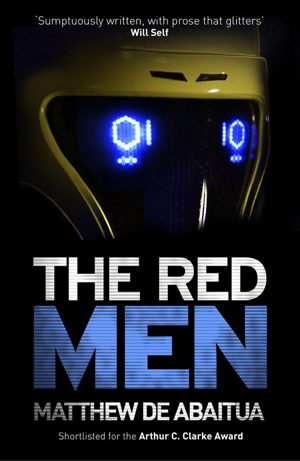 Have the confidence of your own strangeness
Have the confidence of your own strangenessThe universe gets very weird at the quantum level, or in the singularity of a black hole. As our understanding of our solar system deepens, so we can appreciate its strangeness: the lead rain on the hilltops of Venus, the deep ocean beneath the ice of Jupiter’s moon Europa, or the Oort Cloud, trillions of objects at the very edge of the sun’s influence.
I like strangeness, what the German critics call the unheimlich or the unhomelike; that is, something familiar rendered peculiar by subtle differences. Science fiction that strays too far from the familiar sacrifices this ancient frisson.
The robots are already here
Robots replace workers, and they always have, ever since a sorcerer first summoned a golem to clean up his lair.
Think of all the people in the public service you encounter across the course of your life: midwife, nursery assistant, nanny, primary school teacher, youth worker, fireman, policeman, lawyer, parole officer, prison officer, doctor, surgeon, palliative care nurse, undertaker. Then replace them all with robots, many different mechanical bodies but all guided by one cloud-based intelligence.
In this world, the machine gaze that first greets you when you come into the world will be the same diffident, algorithmic mind which lowers you into the earth.
For my novel The Red Men, I invented a robot called Dr Easy. It is covered with soft leather so that if you want to beat it up, it won’t graze your knuckles. The intelligence of the robot is in the cloud and so the bodies themselves are mass-produced, lightweight and disposable. Much like the military drone.
So is artificial intelligence
Google trains its algorithms through exposure to our wants and desires but its all one-way traffic. It is likely that artificial intelligence will be unintelligible to humans. Explore James Bridle’s curation of The New Aesthetic to understand the strange interventions of the algorithmic and digital into what we may nostalgically call the real world.
Virtual reality is over. There will not be a separate digital realm. Digital will be overlay and underlay to the everyday, and we are being changed by it, whether we want to be or not. Just as a letterbox determines the size of an envelope, so the search box will determine the shape of our desires.
What about aliens?
I’m not interested in aliens and every indication is that the feeling is mutual.
Find out more about Matthew De Abaitua’s next two novels, “If Then” and “The Destructives”
Download the Science Fiction issue of Publishing Talk Magazine for free.


How to write Science Fiction
Have the current BBC and BFI Science Fiction Seasons inspired you to write your own science fiction story? As his next two science fiction novels are signed by Angry Robot Books, Matthew de Abaitua shares his advice on creating strange new worlds, in an article that first appeared in Publishing Talk Magazine issue 5.

Start with the idea
Science fiction starts with the idea or what Dario Suvin calls the novum: the new thing. This is a device or premise that is scientifically plausible and which focuses the difference between the reader’s world and the fictional science fiction world. And it’s new, or you’ve found a way of making it new.
H.G. Wells founded modern science fiction with two novums; a time machine and, in The War of the Worlds, a Martian. A novum is not a magic ring, or a wand: these are magical objects and belong in fantasy. A novum belongs to the same hypothetical way of thinking as a scientific experiment.
Expose characters to your idea
How does your idea affect people? Technology is changing us and the world we live in. Tell us a story about it.
In literary fiction, character is the animating force of the narrative. Particularity of character, what has been called ‘depth of character’, is a way of measuring the moral insight of the author.
I teach Writing Science Fiction to undergraduates at Essex University. My favourite workshop exercise is to get the students to devise a novum or idea and then I ask them to choose – at random – a character which I have prepared on a Post-it note, characters as simple as ‘lost child’ or ‘celebrity and entourage’ or ‘dying architect’. The student’s imagination must work to reconcile the novum with the random character. Creativity is, at its core, problem solving and it is more responsive to limits than to the blank page.
Be plausible
Nods and winks to the composition of the text, so modish in the 1990s, are uninteresting to me. Postmodern pranks are particularly fatal for literature of the fantastic. You want the reader to marvel and shiver at the strangeness of your vision. The prose must ring with clarity and conviction and not contain cute in-jokes or alibis.
We can explore this rule via an exception. (All my rules are – like the Post-it notes – arbitrary parameters for creativity to rub up against). Rudyard Kipling wrote an excellent ‘scientific romance’ concerning airships delivering intercontinental mail. The story With the Night Mail took the form of journalistic reports. These were originally published alongside adverts also written by Kipling, for products manufactured in his invented future society. He put this innovative form to the service of believability, transferring the ‘truthiness’ of newspaper reporting to his fantastic tale.
Another easy way to make a story appear plausible is to deploy what I call Spiner’s Precedent, or It Is Happening Again. This is a technique named after Brent Spiner’s role in the film Independence Day. He plays a scientist in Area 51 who explains to the heroes that this is not the first time the aliens have visited, and the last time they came, they left behind a spaceship.
Spiner’s Precedent does two things. One, it sets up a history to your novum, adding plausibility. Two, it provides a character who can provide exposition about the aliens and their intent, without having to ask the aliens themselves.
 Have the confidence of your own strangeness
Have the confidence of your own strangenessThe universe gets very weird at the quantum level, or in the singularity of a black hole. As our understanding of our solar system deepens, so we can appreciate its strangeness: the lead rain on the hilltops of Venus, the deep ocean beneath the ice of Jupiter’s moon Europa, or the Oort Cloud, trillions of objects at the very edge of the sun’s influence.
I like strangeness, what the German critics call the unheimlich or the unhomelike; that is, something familiar rendered peculiar by subtle differences. Science fiction that strays too far from the familiar sacrifices this ancient frisson.
The robots are already here
Robots replace workers, and they always have, ever since a sorcerer first summoned a golem to clean up his lair.
Think of all the people in the public service you encounter across the course of your life: midwife, nursery assistant, nanny, primary school teacher, youth worker, fireman, policeman, lawyer, parole officer, prison officer, doctor, surgeon, palliative care nurse, undertaker. Then replace them all with robots, many different mechanical bodies but all guided by one cloud-based intelligence.
In this world, the machine gaze that first greets you when you come into the world will be the same diffident, algorithmic mind which lowers you into the earth.
For my novel The Red Men, I invented a robot called Dr Easy. It is covered with soft leather so that if you want to beat it up, it won’t graze your knuckles. The intelligence of the robot is in the cloud and so the bodies themselves are mass-produced, lightweight and disposable. Much like the military drone.
So is artificial intelligence
Google trains its algorithms through exposure to our wants and desires but its all one-way traffic. It is likely that artificial intelligence will be unintelligible to humans. Explore James Bridle’s curation of The New Aesthetic to understand the strange interventions of the algorithmic and digital into what we may nostalgically call the real world.
Virtual reality is over. There will not be a separate digital realm. Digital will be overlay and underlay to the everyday, and we are being changed by it, whether we want to be or not. Just as a letterbox determines the size of an envelope, so the search box will determine the shape of our desires.
What about aliens?
I’m not interested in aliens and every indication is that the feeling is mutual.
Find out more about Matthew De Abaitua’s next two novels, “If Then” and “The Destructives”
Download the Science Fiction issue of Publishing Talk Magazine for free.

November 12, 2014
The mobile web: how social media grew so fast

One of the things that has enabled the rapid growth of social media is the increased uptake of smartphones and mobile web browsing. More and more of us access the Internet on the move from our phones. The International Telecommunications Union has even predicted that mobile access to the Internet will soon overtake access from desktop computers. In some parts of the world, such as Africa, mobile phones have been the primary access point to the internet for a while already.
It is not just mobile access to the Internet itself: it’s all those apps. All your favourite social media sites and services are available as iPhone or Android smartphone apps. Some, such as Instagram, are only available if you have a smartphone. The fact that many of us update our Twitter or Facebook status on the move – often including photos and/or location information – is what has driven the growth of these networks. We are entering a world where all media is social, and all our social interactions are mediated via apps and updates.
What does this mean for you?
Make sure your websites are accessible from mobile devices – discuss this with your web designer, or choose a WordPress theme that states it displays well on smartphones
Take advantage of all those social networking apps by using them on your smartphone – it will save you time, and enable you to react quickly on the move.
This post is an extract from the Introduction to the 2nd edition of Get Up to Speed with Online Marketing. Read the full Introduction and Chapter 1 here.
[005]

How to write about food
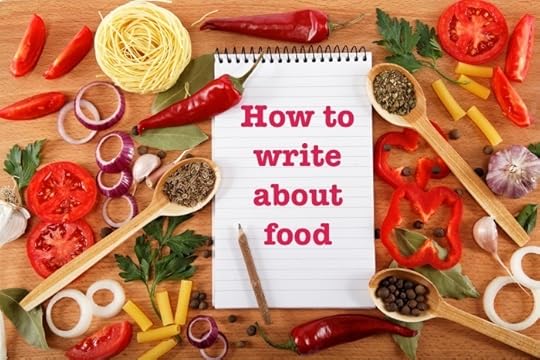
Food literature can be hard to categorize. Consequently bookshops struggle with exactly where to place such books on the shelves. This I know from bitter experience. All too often they get lumped in somewhere with the huge £25 hardback, recipe-led, TV-series-supporting tomes featuring gurning chefs looking slightly to one side on the cover. Food writing books then, are like remora fish, swimming along stuck to the bellies of much bigger beasts.
But the beauty of ‘food writing’ is that because it straddles so many other genres (food and travel, food and memoir, food and journalism, food and history – even food and fiction) it gives authors a huge area to explore. Also, as we become more ‘food literate’, some readers begin to seek out more context, more depth, and more story. All food writing, though, boils down to one of two approaches: either ‘I’ve led a fascinating life and here’s my amazing story’; or ‘I’ve put in loads of research and here’s an amazing story’. So which one are you?
The autobiographical route
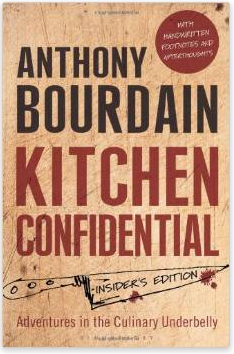 Anthony Bourdain’s Kitchen Confidential was a watershed in 2000. A book that described the visceral pleasures of eating as much as it did the physical and mental abuse of working in a restaurant kitchen, contained not a single recipe. Since then many a chef has followed suit, each a dilution of that original idea. There is no more defunct sub-genre than the testosterone and booze-fuelled if-you-can’t-stand-the-heat-get-out-of-the-kitchen book. Because no one – especially in England – will ever beat Bourdain. Unless you’re doing heroin at the pass, you’re always going to be second fiddle. Even Marco Pierre White’s White Heat, which actually came out 10 years before Kitchen Confidential and even contained some recipes, failed to have the impact of Bourdain’s book on British chefs. I guess things were different in the ‘90s.
Anthony Bourdain’s Kitchen Confidential was a watershed in 2000. A book that described the visceral pleasures of eating as much as it did the physical and mental abuse of working in a restaurant kitchen, contained not a single recipe. Since then many a chef has followed suit, each a dilution of that original idea. There is no more defunct sub-genre than the testosterone and booze-fuelled if-you-can’t-stand-the-heat-get-out-of-the-kitchen book. Because no one – especially in England – will ever beat Bourdain. Unless you’re doing heroin at the pass, you’re always going to be second fiddle. Even Marco Pierre White’s White Heat, which actually came out 10 years before Kitchen Confidential and even contained some recipes, failed to have the impact of Bourdain’s book on British chefs. I guess things were different in the ‘90s.
The ballsy chef memoir is perhaps the best-known non-recipe food book. But there are stories everywhere. A good example of this is Maynard Davis’s Adventures of a Bacon Curer. Here’s what its publisher had to say:
Maynard’s manuscript sat on my desk for several weeks before I got round to the task of, as I thought, rejecting it. It looked like an ape’s breakfast and I felt sure it would never make any money. But I was touched at the thought of a now-elderly bacon curing apprentice and his life story, and felt that out of courtesy, I would read a couple of chapters in order to write a fair rejection letter. I took it home with me that night. By 3am I was still reading.
It is indeed, a charming book. For me, the best bit is where some big shot local who wants to buy Mynard’s van gets his comeuppance after not selling Mynard a sports car years earlier. They say revenge is a dish best served cold, but this is revenge that’s not only cold, but salted, wrapped in cloth and matured in the cellar of Maynard’s heart for years.
The point is, you have to have something interesting to say . The same applies for another popular sub-genre, food and travel. Your story had better be interesting. Your sabbatical tour of Tuscan vineyards isn’t really going to cut it. You’ve got to blaze a trail.
The well-researched route
The other approach is the expertly researched angle, the person who has tended a vegetable plot for years, the girl who simply likes gin. This isn’t to say that there’s no room for personal experience in these sorts of books, but it tends to take a back seat to the meticulous research, interviews and hard-learned facts and experience.
I actually love books like this. Good examples include Bee Wilson’s excellent Swindled: From poison sweets to counterfeit coffee – the dark history of the food cheats.
Advice for food writers
Food writing is still writing. Whichever route you decide to take, remember, food writing is still writing. You’ve got to be good at it, be able to craft a turn of phrase, create that memory or image in your reader’s mind, wow them with your knowledge and experience. You don’t necessely, nesercerily, necessarily need to be able to spell, a good copy editor can easily sort that out (this too I know from bitter experience).
Sum up your idea succinctly. The most important thing is a good idea and, after that, it’s a thick skin and a little bit of luck. TV people talk of the ‘elevator pitch’, but your idea doesn’t have to be as short as that. However, you do need to be able to sum it up succinctly. What we’re seeing more of now, in both books and on channels such as BBC Four, is the short title with a longer sub head, e.g. Carved with Love: The Genius of British Woodwork. or Bee Wilson’s lovely Consider the Fork: A History of How We Cook and Eat, or Eric Schlosser’s Fast Food Nation: What The All-American Meal is Doing to the World. Contrast this with a title like Offal and the New Brutalism from 1985, and you get the picture. The latter is a really interesting book though, being a collection of short essays and stories and a window on the food scene in 1980s London.
Top tools and tips
A notebook or smartphone capable of taking notes is a must. Those little bon-mots you hear on the bus, note them down. Ditto details, facts, names. All are the bread and butter of your story.
Buy a copy of Scrivener – it is simply the best program for writing books in my opinion. It’s a steal at £25. The support is excellent, and there’s a thriving community of writers trading tips too.
Write every day, even if it’s rubbish. Most of writing is re-writing.
Find somewhere comfortable to work. I wrote most of my first book lying on a friend’s sofa. Now I have a bespoke studio in the garden, but if I really want to try and write, I still lie on my sofa. Another place I like to work is the Reading Room of the British Library, just because the atmosphere is so scholarly, it stops me from messing about.
Turn of Twitter, email and all that other distracting stuff.
Don’t even think about using Microsoft Word. It’s for writing letters – not books.
Andrew is running a Guardian Masterclass on food writing on the 15th December 2014 in London. Find out more at: www.theguardian.com/guardian-masterclasses/how-to-write-and-publish-a-book-about-food-andrew-webb-writing-course.

September 28, 2014
Publishing Talk Magazine issue 6 – Children’s Publishing
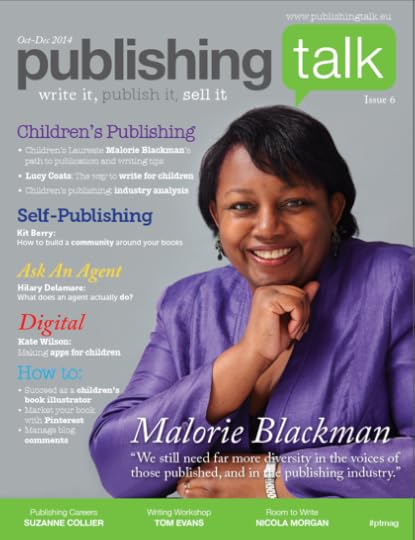 Read Children’s Laureate Malorie Blackman’s exclusive interview in issue 6.
Read Children’s Laureate Malorie Blackman’s exclusive interview in issue 6.
The PDF edition is FREE to download right now (22.5 MB).
Issue 6 is also available as a print-on-demand magazine from MagCloud, and a text-only Kindle edition from Amazon.co.uk and Amazon.com.
Please join our mailing list for details of the next issue and new resources from Publishing Talk.
In our first children’s publishing themed issue we’re delighted to have an exclusive interview with Children’s Laureate Malorie Blackman.
The author of the Noughts and Crosses series speaks to our contributing editor Lucy Coats about her path to publication, top writing tips – and the need for greater diversity in children’s books. Malorie is a great champion for diversity in children’s literature – yet, astonishingly (and dismayingly), this is a view for which she recently faced criticism and even racist abuse. I have to say, when I read Lucy’s insightful interview, it hadn’t even occurred to me that this was controversial! Surely children should see themselves reflected in the books they read?
The good news is that children’s books in general are booming: the market is up 10% this year in the UK. Lucy Coats also looks at the state of the children’s book business, and has some great advice on writing for children. The opportunities in this market are increasingly digital, and Kate Wilson shares some valuable lessons she has learned while developing apps for children at award-winning independent children’s publisher Nosy Crow.
If you want to break into children’s publishing, children’s agent Hilary Delamere explains how an agent can help; Steven Lenton offers his tips for succeeding as an illustrator; and Suzanne Collier has advice on using LinkedIn to get your next publishing job. If you’re thinking of going it alone, Kit Berry reveals how she built a community around her self-published Young Adult books, the Stonewylde series.
There’s also a writing workshop from Tom Evans, who invites us to awaken our inner child with our writing; and award-winning author Nicola Morgan gives us an insight into her writing. Social media is key to success, and there’s another WordPress tutorial, this time on managing your blog comments; plus advice on marketing your books with Pinterest.
Hope you enjoy this issue!
Now also available as a print-on-demand magazine from MagCloud and a text-only Kindle edition from Amazon.co.uk and Amazon.com.
You might also like…
Page preview
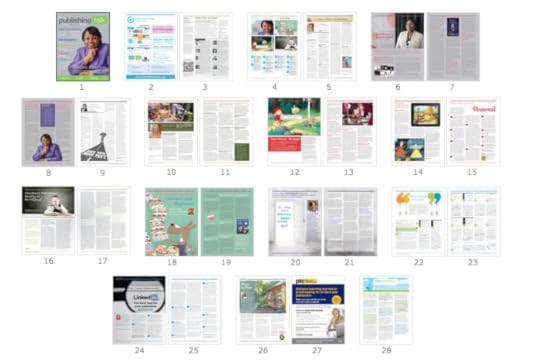
What we’re talking about in this issue
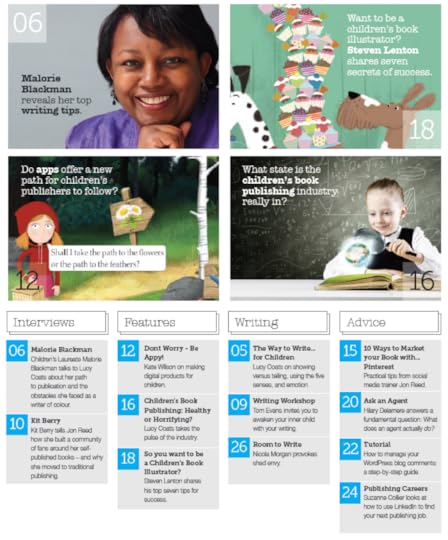
Download PDF editions for free
The PDF edition of issue 6 is available for free as a direct download now (22.5 MB).
 Missed an issue? PDFs of all back issues are now available to download for free.
Missed an issue? PDFs of all back issues are now available to download for free.
Kindle editions are also available at Amazon.com and Amazon.co.uk.
Sign up to our mailing list to be the first to hear about new issues and resources.
What people are saying on Twitter
Great #kidlit edition of @publishingtalk. Interesting, informative and very useful. Good tips from @malorieblackman @jonreed + a lot more.
— Maria Farrer (@FarrerMaria) October 1, 2014
Excellent Edition! @publishingtalk: Publishing Talk Magazine issue 6, Oct-Dec 2014 – Children’s Publishing – http://t.co/1S362YQ7Jd — Sarah Towle (@towlesarah) September 30, 2014
@lucycoats @publishingtalk @malorieblackman @nicolamorgan @Kit_Berry @jonreed Terrific articles, all! Sharing with clients and colleagues.
— emma d dryden (@drydenbks) September 30, 2014
@publishingtalk Your children’s pub issue is terrific! thank you for the great info and content! am sharing… — emma d dryden (@drydenbks) September 30, 2014
Hooray! #kidlit ed of @publishingtalk is out. Fab stuff from @malorieblackman @nicolamorgan @Kit_Berry @jonreed & ME http://t.co/yGpczJKK9r
— Lucy Coats (@lucycoats) September 30, 2014
New edition of Publishing Talk up now – including me provoking shed envy http://t.co/HII91rKhSI @publishingtalk — Nicola Morgan (@nicolamorgan) September 30, 2014
@NosyCrow @lucycoats Thanks for your words in @publishingtalk, inspiring! I loved the comparaison film/app, i thought about it these days.
— Anne Viel (@AnneCaroViel) September 28, 2014
Read my article on becoming a children’s book illustrator in the the new @publishingtalk Magazine out now! pic.twitter.com/FOL5klqHrG — Steven Lenton (@2dscrumptious) September 28, 2014

September 9, 2014
Three business models for self-publishing your books in print

When self-publishing a print book, you may wish to go it entirely alone and set up your own production, marketing and distribution networks, or you may wish to use one of the many companies offering some of these services. Well-known book creation and publishing platforms such as CreateSpace, Matador and CompletelyNovel offer the creation and distribution services you might lack, but in a variety of ways. Each company operates a different business model. By having a clear idea of how their models differ, you can be clear about what you’ll be getting from them and whether that matches your aims and publishing mindset.
So, which model would best suit you? Here, we outline three different business models operated by self-publishing companies and platforms, and their pros and cons for authors.
First things first: What do you want from your book?
Are you looking for the opportunity to conventionally publish? Is you main goal to have wide availability for your work? Hungry for money? Knowing what your priorities are will help you make sense of what each of the models below are offering. It’s important to be realistic in your aims and do your research about what you can expect from independent publishing. The Alliance of Independent Authors has a wealth of grounded information and statistics to help.
1. The Commission-Based Model
This business model is the most frequently used by print-on-demand publishing companies, including Amazon’s CreateSpace, Lulu and Ingram Spark. Rather than charging an outright fee, the Commission Model platform makes its money by taking a percentage of every book sold.
The numbers: Around 40% (depending on the platform) is taken from the profit of each book by the publishing company, and the rest is returned to you.
The positives:
Start publishing with no upfront fees – thanks to print-on-demand, the cost of the book is deducted from the RRP, meaning you might not have to pay anything upfront to get your book out there
Safety in numbers – thousands of other authors publish this way as it’s the most well-known
Financially, it is the best option for books that sell less than six copies a month (such as back-lists, niche books or for new authors who aren’t sure).
The negatives:
Other models may offer a higher royalty rate, so it isn’t always the best option financially
This might not be the best option if you are looking for a personalised service or help
The drawback of this model combined with print-on-demand is that (particularly with larger books that cost more to produce) you sometimes have to price your book higher than the standard market price to earn a reasonable royalty.
2. The Upfront-Fee Model
This model has had a few different names, but relates to the publisher who will charge an upfront fee to create, publish and sometimes even market your book for you. This model has previously been exploited with ‘vanity publishing’, but companies such as Matador have proved that this model can be trustworthy and a viable way to publish.
The numbers: Authors will be asked to pay an upfront fee before their book is published, usually upwards of £700/$1,200, averaging about £1,500/$2,500 (stats taken from services reviewed by TIPM). The services included in this will vary, but usually include editing and design from their in-house staff. Authors may also be charged a small commission per book.
The positives:
Suits authors who don’t have much time to spend creating their book on a computer, or want to simplify self-publishing so all aspects are done by the same company
Often a more hands-on service, covered in the upfront fee
Financially, it works for those who want book creation services and have a ready-made readership to make back the initial outlay.
The negatives:
It can be difficult for an indie author to make back their initial investment
The editing and design services offered as part of a package can also sometimes seem like ‘factory line editing’, and authors might find that they get a more personalised service hiring a freelancer
Some authors have also found themselves tied into long contracts, so check the small print when signing up
Other models may have a higher royalty rate if a commission is also charged for books sold.
3. The Subscription Model
The consumer version of this model has been made popular by sites such as Netflix and Spotify, but it can also apply to publishing. In this model, authors ‘subscribe’ to publishing services for one fixed fee per month, rather than commission from sales. This is the model adopted by CompletelyNovel.com.
The numbers: Authors pay a fixed fee of £7.99/$11.99 per month for two titles, or £14.99/$21.99 per month for up to ten titles, and keep 100% of book royalties. The subscription cost covers the use of online creator tools to produce the book, ISBN registration and worldwide distribution through print-on-demand.
The positives:
No upfront fees – subscription amounts taken and royalties deposited monthly
Financially the best option for authors selling more than six books a month (such as new titles with marketing efforts behind them)
No contract or lock-ins (good for authors looking for publishing contracts with traditional publishers, as they can leave at any time).
The negatives:
Not financially viable for those consistently selling less than six books
This might not be the best option if you are looking for lots of hands-on assistance.
Consider the company
As well as the model, you should also spend some time researching the individual company you are getting involved with. Independent companies like Matador and CompletelyNovel can afford to offer a more personalised service and individual rewards, whereas larger companies such as CreateSpace and Lulu will have more tools and DIY information available from author sources, but it may be harder to reach a real person. The Independent Publishing Magazine offers a useful list of things you should be thinking about when choosing the company for you.
Another thing to note here is that you don’t have to be tied into one method forever. Some authors might find that it makes sense to make use of all of these methods for different books – their books for which they already have an audience could be published with the Upfront-fee model, their popular new titles on the subscription model, and their older titles on the Commission Model. This shows what a wealth of options are available for all sorts of authors with all sorts of different goals. It’s just a matter of choosing which one is right for you.
For a more detailed look into the costs of the subscription model over the commission model, see CompletelyNovel’s price comparison test on Pride and Prejudice.

July 1, 2014
From Fantasy to Reality – How Ben Galley became a Successful Self-Publishing Authorpreneur
This article first appeared in issue 5 of Publishing Talk Magazine.
Ben Galley reveals how he self-published his way to become a successful ‘authorpreneur’ at the age of 26.
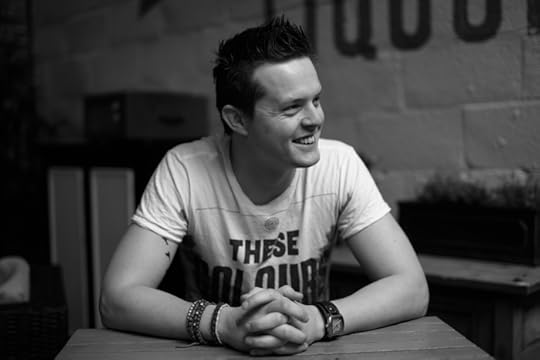
Ben Galley is a young self-published author of the epic and gritty fantasy series The Emaneska Series. He has published four books to date, and doesn’t intend to stop any time soon. Zealous about inspiring other authors and writers, Ben also runs the popular advice site Shelf Help, where he offers advice about writing, publishing, and marketing; and is the co-founder and director of ebook store Libiro, a store exclusive to indie authors. He has become a successful full-time ‘authorpreneur’ at the age of 26 and within a few years of publishing his first book. Jon Reed asks him how he did it.
How did you get started writing? How did The Emaneska Series come about?
I’ve always had a burning desire to spin yarns. It’s a passion that I attribute to my parents force-feeding me books at a young age (something which I’m now eternally grateful for!) I wrote my first ever novel by the time I was 12, and two more soon followed it, but due to education and the natural fickleness that comes with being young, writing became an occasional hobby. It wasn’t until I graduated from a music academy that writing started to crawl its way back into the No.1 priority spot.
As the opportunities in the music industry began to wither, I found myself working a succession of dead-end jobs in bars and pubs. After two years, enough soon became enough, and I decided it was time to turn my hobby into a profession. I had no idea what I was going to write, but I knew I had to write it, and get it published somehow. That was my driving force. That, and a rediscovery of my passion for telling stories.
The concept for the Emaneska, as all good ideas do, simply popped into my head one day, and it wedged itself there, filling my head with possibility. I knew it had to be dark, and mysterious, and packed with fantasy – a genre I’d always loved. Suddenly, while planning the first book, more ideas began to grow and evolve, and before I knew it, I had an epic series planned out. And here I am, just under 5 years later, a full-time author entrepreneur.
Did you always plan to self-publish, or had you considered traditional publishing?
When I started writing The Written, the first book in the Emaneska Series, I had it in my mind to go the traditional route. The primary reason for this was that I had no knowledge of any viable alternative. Once I’d finished writing, I began to research agents and publishing houses. It was then that I stumbled across something called self-publishing. It seemed almost too good to be true, and very similar to what had happened to the music industry several years before. I may have missed the boat with music, but the book industry was hovering on the very cusp of great change, and I instantly saw my opportunity. Luckily, many of the skills I had learnt at the music academy – ACM – were transferable. The indie path made perfect sense, and so I launched myself into self-publishing with everything I had.
I stumbled across something called self-publishing. It seemed almost too good to be true.
How did you choose your formats? Is print still important for self-published books?
Many indie authors out there are happy to stick to ebooks, which isn’t a bad thing at all but, for me, print was a necessity. I wanted to see my book on a shelf in a bookstore. I wanted to do signings and tour. I wanted to hold my book in my hands and have that validation. And, most importantly, I wanted that extra revenue stream running alongside my ebook royalties. Print hasn’t died out yet and in my opinion it never will. Just look at the resurgence of vinyl, against the MP3. It’s an important market, and thanks to Print On Demand technology, publishing print books has never been easier!
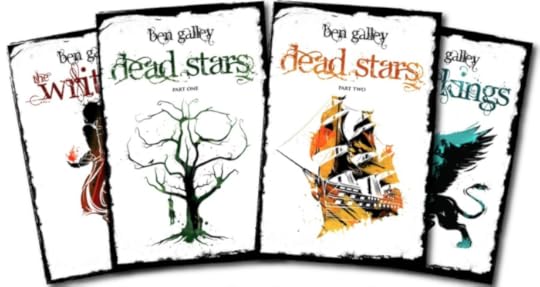
Print hasn’t died out yet – and in my opinion it never will.
How do you market your books? What has given you the best results?
I market my books in a whole variety of ways and methods. I think it’s important to get your fingers into lots of pies, just as long as doing so doesn’t hamper your priority – writing. I mainly market my books by sourcing reviews and chatting to readers and fellow authors on social media. I also produce a lot of content, such as video blogs and self-publishing advice at my site Shelf Help. Content is really useful, as it gives people something to really get their teeth into, more so than a tweet or a Facebook post. I also do a lot of competitions and giveaways, including setting my book as a ‘perma-free’ giveaway at my site, on Amazon, and on Kobo. That’s worked very well for me!
Does writing a series of books in a genre help when it comes to self-publishing?
It does indeed. Even though some authors advise sticking to standalone or shorter-form fiction, to avoid getting trapped by a long series, the Emaneska Series has done me proud. If a reader likes the first book of a series, then the likelihood is they will buy the second, and the third, and the fourth, and so on. From a business point of view you’re creating repeat business and, so long as each book is enjoyable, then the reader will become more and more loyal. This is really important for establishing a keen and responsive fanbase.
If a reader likes the first book of a series, then the likelihood is they will buy the second, and the third, and the fourth, and so on.
What has been your greatest challenge in self-publishing?
Two words: time management. It’s my own fault really – I’m a little obsessive when it comes to getting things done and piling my to-do list high. It is usually a good thing as I get a lot done in a short time, but my heavy schedule has bitten me in the past. It is a challenge that many indies face, especially when it comes to marketing. There are only so many hours in a day, and when you’re your own business, the ‘admin’ that comes with it can take its toll.
You also help other self-published authors through your Shelf Help website. How did that come about?
In 2012 I realized that there was a huge lack of knowledge in this industry. Self-publishing is still a young industry, one that is still constantly evolving. When keen writers want to know more, they either find very little information, or they find the wrong information. I wanted to correct that, as I felt my method – the Shelf Help method – of DIY self-publishing was a very affordable, professional, and technological way of publishing. I simply wanted to get my methods out there and help others raise the bar.
Shelf Help features honest and free advice from myself and all sorts of other authors and industry experts. We cover writing, publishing, and marketing, as well as industry news and warnings about disreputable providers. Via the site you can also organize 1:1 consultancy sessions with myself. These are bespoke, intensive sessions that focus on you, your needs, and your books – helping you get exactly what you need. I also released a full-length Shelf Help guide in February 2014, packed with advice on DIY self-publishing and step-by-step guides.
What prompted you to launch an ebookstore for self-published books?
The primary reason for launching Libiro was that we wanted to provide a dedicated space, just for indie authors. I mentioned this is a young industry, and although we authors now have access to major stores like Kobo and Amazon, we still share the shelves with major traditional authors. This means it can be hard to stand out and to make decent sales.
What Libiro provides is an exclusive marketplace, giving authors a better chance to sell books and showcasing what indie authors are capable of. We want to show readers what self-publishing is all about, and that indie literature is new and exciting.
You’re clearly very entrepreneurial. Do you think this is a pre-requisite to be a successful self-published author?
I do indeed. We now live in an age where, thanks to technology, it’s easy to become a one-man or one-woman business. Books are no different. Although many of us authors write for the sheer pleasure and pride, most of us write because we want to make a living. It is one of the best jobs on the planet, after all!
To make a living, we need to be business-minded and entrepreneurial.
To make a living, we need to be business-minded and entrepreneurial. It helps us to constantly seek new heights, to evolve and streamline, to stay focused and profit-driven, to be smart and opportunistic, and above all, to strive for professionalism. This new industry is full of opportunities but, to reap them, we need to play the game. That game, in my eyes, is business. Everything needs to revolve around that.
What is the best advice you can offer to someone considering self-publishing?
Be professional. Above all things. Many people out there believe that professional-looking books can only come from traditional publishing houses, and sadly there are many authors reaffirming these beliefs by producing poor-quality books without a second thought (this was another reason for setting up Shelf Help!) I say different. I know for a fact that it doesn’t take a traditional publisher to produce top-notch quality, and I know first-hand that it is possible to attain professional levels the DIY way. It just takes effort and time!
It doesn’t take a traditional publisher to produce top-notch quality.
Ben Galley’s Top Tips for Self-Publishing
Write a damn good book. The future of your career rests solely on what sort of story you write, so write a good one!
Aim as high as you can in everything you do. Professionalism is key if you want to succeed. This means that…
You need to use professionals. By this I mean editors, cover designers, and formatters to get your book polished into a professional, sellable product.
Keep your ear to the ground. This industry changes almost daily. Being aware of new and existing providers will really help.
Remember to keep writing, and keep that your priority. We’re authors, after all. That’s what we do!
Find out more about Ben at his website, www.bengalley.com, or follow him on Twitter at @BenGalley.
Download issue 5 of Publishing Talk Magazine.


